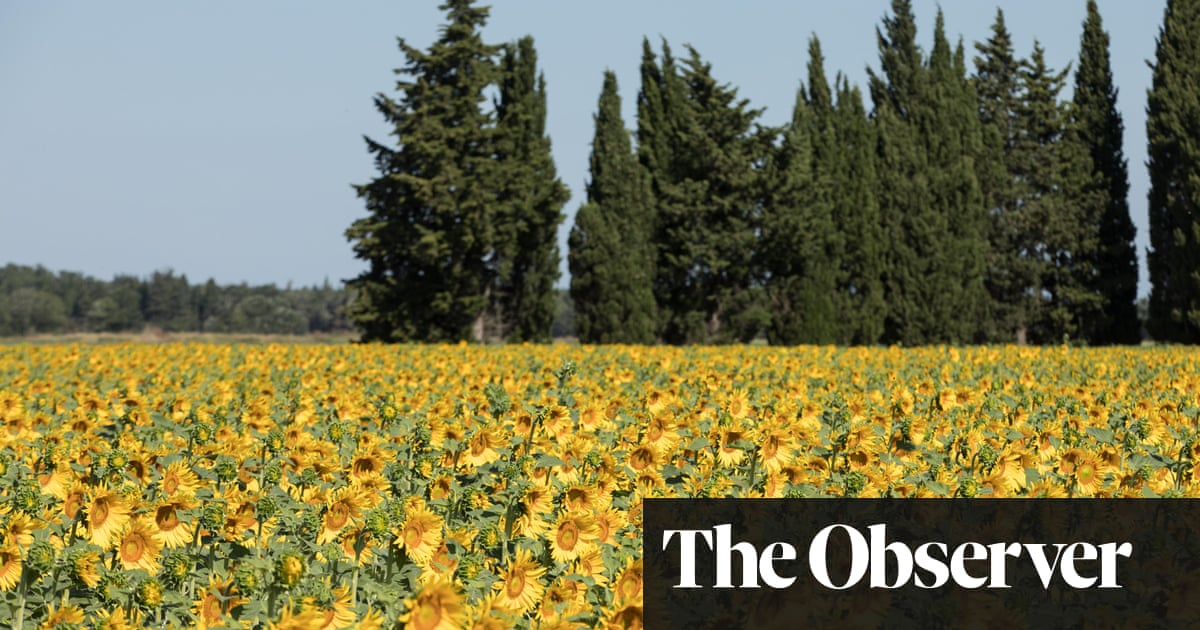The market at Arles in France every Saturday stretches for more than 2km, the lush countryside around yielding enough produce to fill more than 400 stalls to overflowing. Alongside the plump fruit and vegetables, drifts of cheese and butter paint the whole scene a deep cream, echoing the Provençal cityâs warm limestone and light yellow plaster.
Vincent van Gogh was drawn to yellow, which radiates from many of his best-known and best-loved paintings. The Yellow House was his home outside the cityâs ramparts when he moved from Paris to Arles in 1888, hoping (and failing) to start an artistsâ colony. It was a studio only in the summer, then furnished for living in the autumn. A new park nearby that he dubbed Poetâs Garden inspired pictures that burst with colourful and abundant growth.
Vibrant sunflowers, which he first encountered in his Paris days at the flower stalls in Montmartre, became a regular motif. So, too, the olive trees and cypresses punctuating the plains below the spine-like Alpilles. Van Gogh would regularly walk for an hour or more, through the agricultural land that supplied the Saturday market to the Romanesque abbey Montmajour, not to sketch the vast and picturesque ruins, as many artists would have done, but to capture the landscape around.
The blockbuster Van Gogh exhibition at Londonâs National Gallery (until 19 January 2025), celebrating its 200th birthday as well as 100 years since it bought the Sunflowers, is dominated by works created in Arles. There are also many painted in neighbouring Saint-Rémy-de-Provence, where the artist was treated in the asylum in 1889. Today, the site of the Yellow House and of the gardens, the abbey, and the asylum are among the places that admirers of Van Goghâs work can visit.
Through the streets of both towns stand picture-board reminders of his scenes, with comments taken from his numerous descriptive letters to his brother Theo in Paris. Just as Vincent dropped muddy Dutch hues for light-drenched pastels when he moved to Montmartre, with his move to Arles he affirmed his new stronger palette. He would have spent little or no time in the market, being a terrible cook who mixed soup as he mixed paints, as his erstwhile friend and fellow painter Paul Gauguin noted. Rather, he ate in cafés. Still a feature of the pretty Place du Forum is the famous Le Café de la Nuit. Currently closed because of a legal wrangle, it nevertheless attracts tourists. A table outdoors at the Bistrot Arlésien offers a view of the Café de la Nuitâs cheerful facade, now as deeply yellow as Van Gogh painted it.
Today, visitors to Arles can check into the blue-shuttered Hotel Calandal, with its sunny terrace overlooking the imposing Roman amphitheatre and smaller outdoor theatre that helped make the city a World Heritage Site. Van Gogh did not paint either of these, preferring to crown the Café de la Nuit with a constellation of scintillating stars.
But the artistâs most famous night sky twinkles above two lovers clinging together on a sandbank at a bend in the river that runs through Arles. In Starry Night Over the Rhône, the reflected street lamps echo the Great Bear above. Van Gogh considered the gaslight brutal, but his starlight âdiscreetâ. Starry Night, which draws the biggest crowds at the Musée dâOrsay in Paris, is now attracting huge numbers at the National Gallery. Maybe wear yellow to view.
Van Gogh: Poets and Lovers is at Londonâs National Gallery until 19 January. For more about Arles, go to arlestourisme.com. Rooms at the Hotel Calendal from £108 a night
More French destinations that offer a brush with greatness
Pablo Picasso
The prolific Pablo Picasso (1881-1973) spent his final years on the Côte dâAzur, drawn to the light and good living of the south of France. In 1946, at the 14th-century Château Grimaldi, Antibes, he drew, painted and made ceramics, donating more than 100 works to the worldâs first Picasso museum, in the château. Treasures include the exuberant Joie de Vivre.
Henri Matisse
It was December, and the room was dreary, but when Henri Matisse (1869-1954) checked into a Nice hotel for the first time in 1917, the course of his life and art was sealed. Interiors and the sea beyond are among the most vibrant pictures by the artist, who spent the rest of his life in the area, finally designing the Dominican Rosary Chapel, from glass to vestments, at the nearby commune of Vence.
Paul Gauguin
When Paul Gauguin (1848-1903) arrived in Pont-Aven, Brittany, on the first of several stays, in 1886, he was inspired by local traditions, religion and the presence of other artists in the sort of commune that van Gogh would have liked to have formed. On the edge of the pretty town, walk in the woods where Gauguin radically rethought colour.

